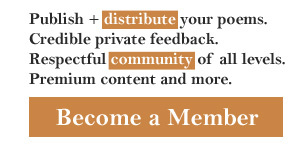This is an analysis of the poem I Refuse To Have My Mind Rattled that begins with:
I've got my shoes shine bright,
With a smile that shows......
Elements of the verse: questions and answers
The information we provided is prepared by means of a special computer program. Use the criteria sheet to understand greatest poems or improve your poetry analysis essay.
- Rhyme scheme: ABCD EAFAgA BABABABHBI BABABABHBI EAFAgA BABABABHBIXABCDbBABABABHBIBHBI
- Stanza lengths (in strings): 4,6,10,10,6,30,
- Closest metre: iambic trimeter
- Сlosest rhyme: alternate rhyme
- Сlosest stanza type: sonnet
- Guessed form: unknown form
- Metre: 111111 00111 01011 1101001010 1101101100 11001110101 10101111111 011101001 1 10101010001 101 01001100 101 01010101 101 01111101 1101 01111001 1101 011110 111 01001100 101 01010101 101 01111101 1101 01111001 1101 011110 1101101100 11001110101 10101111111 011101001 1 10101010001 101 01001100 101 01010101 101 01111101 1101 01111001 1101 011110 111111 00111 01011 1101001010 01 111 01001100 101 01010101 101 01111101 1101 01111001 1101 011110 1101 01111001 101 011110
- Amount of stanzas: 7
- Average number of symbols per stanza: 231
- Average number of words per stanza: 44
- Amount of lines: 65
- Average number of symbols per line: 24 (strings are less long than medium ones)
- Average number of words per line: 5
Mood of the speaker:
There are many three dots in the poem. Readers should think of the author's idea together with the pensive speaker.
The author used lexical repetitions to emphasize a significant image; i, to are repeated.
The author used the same words i've, i at the beginnings of some neighboring stanzas. The figure of speech is a kind of anaphora.
The poet repeated the same word rattled at the end of some neighboring stanzas. The poetic device is a kind of epiphora.
If you write a school or university poetry essay, you should Include in your explanation of the poem:
- summary of I Refuse To Have My Mind Rattled;
- central theme;
- idea of the verse;
- history of its creation;
- critical appreciation.
Good luck in your poetry interpretation practice!
Pay attention: the program cannot take into account all the numerous nuances of poetic technique while analyzing. We make no warranties of any kind, express or implied, about the completeness, accuracy, reliability and suitability with respect to the information.
More information about poems by Lawrence S. Pertillar
- Analysis of Down To Earth And Obvious
- Analysis of On The Lurch To Attack
- Analysis of Whenever One Feels In The Mood

